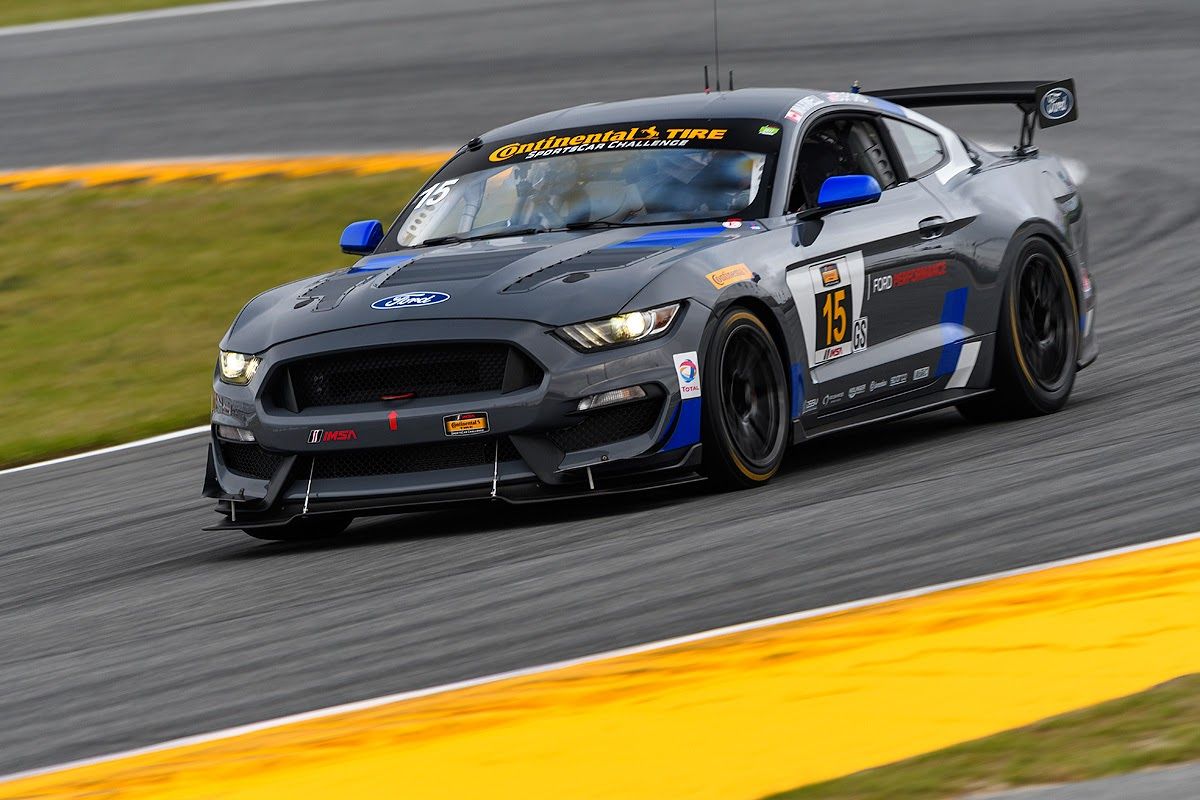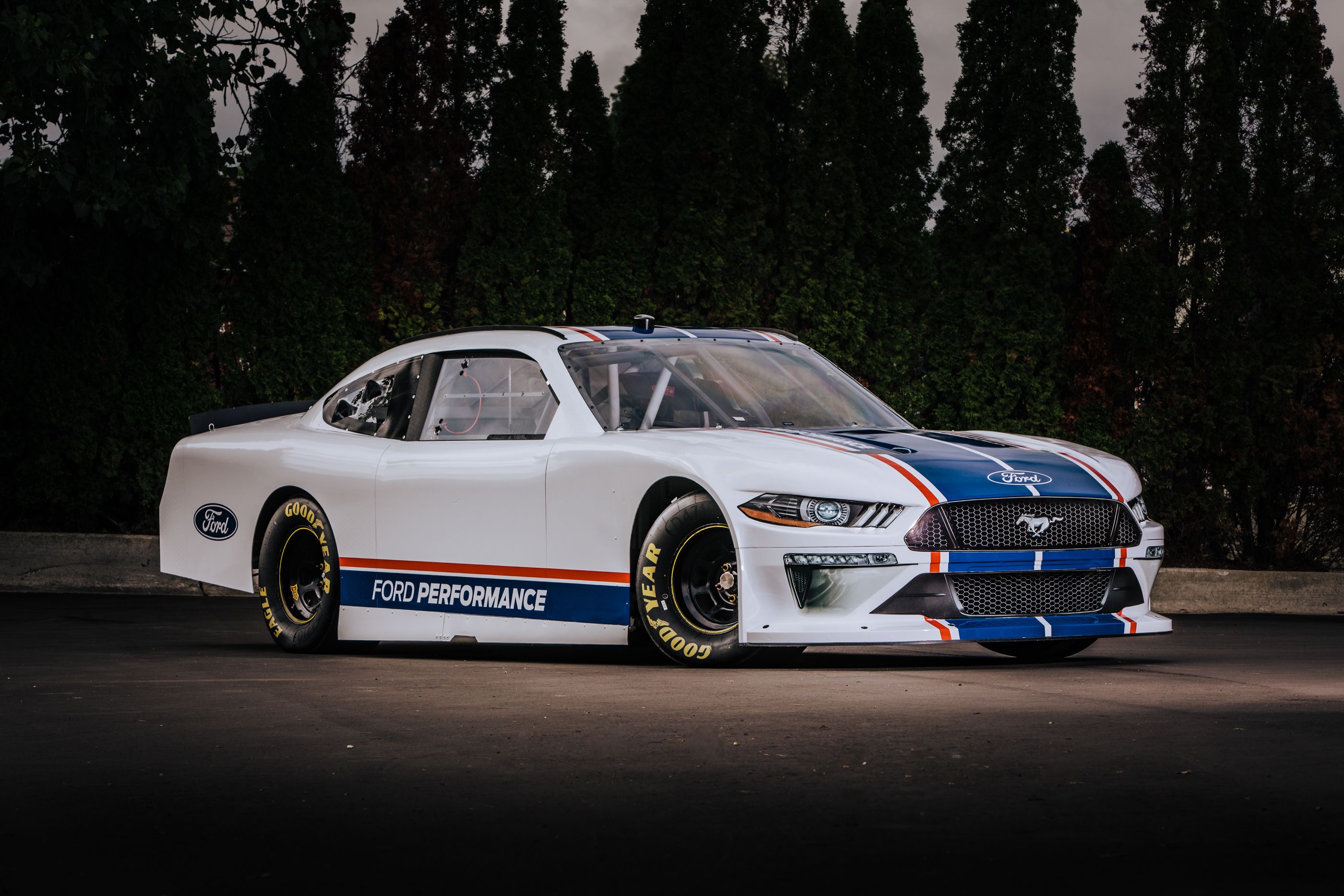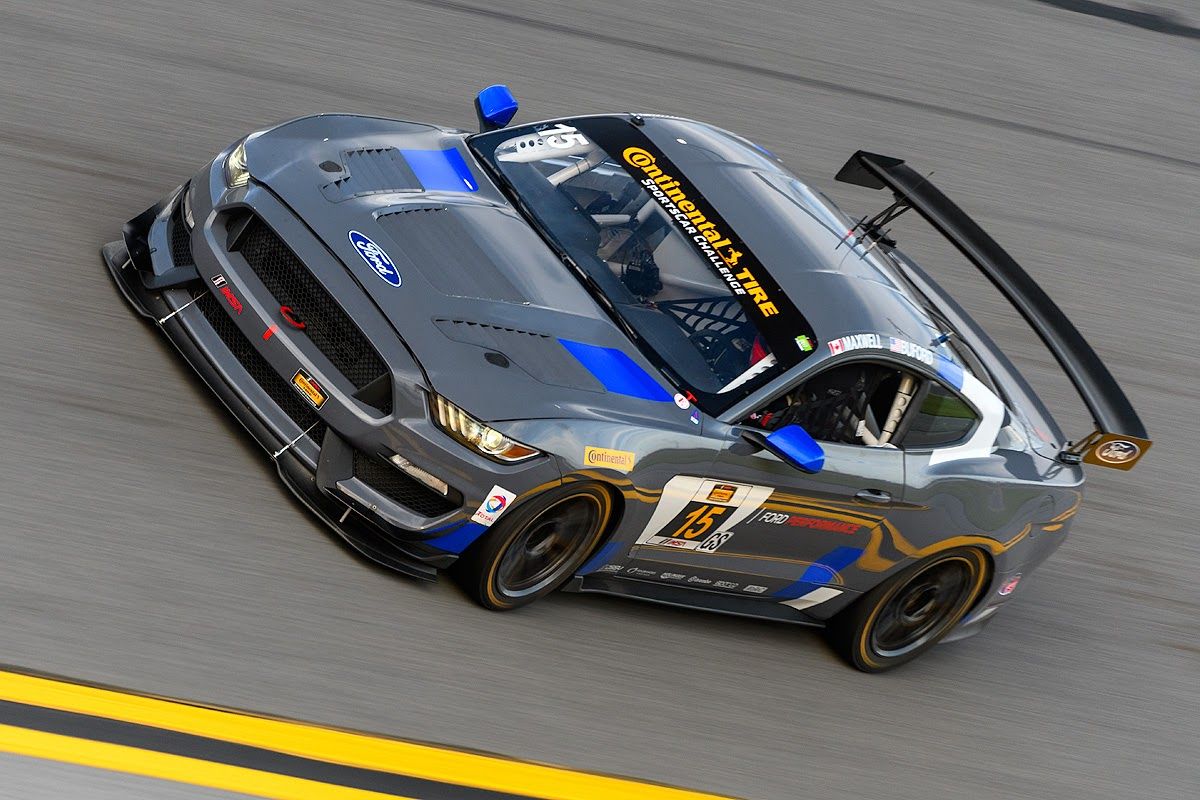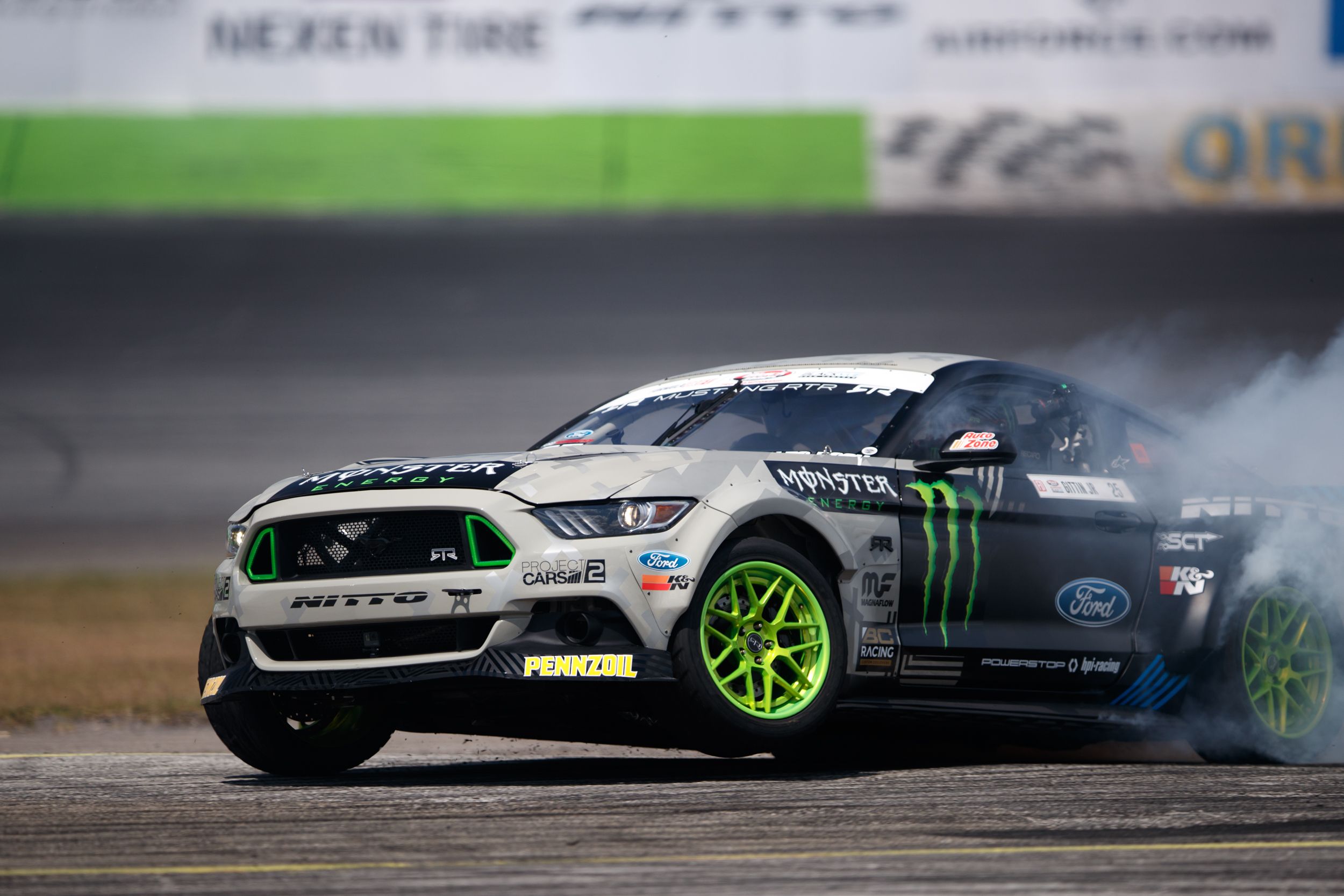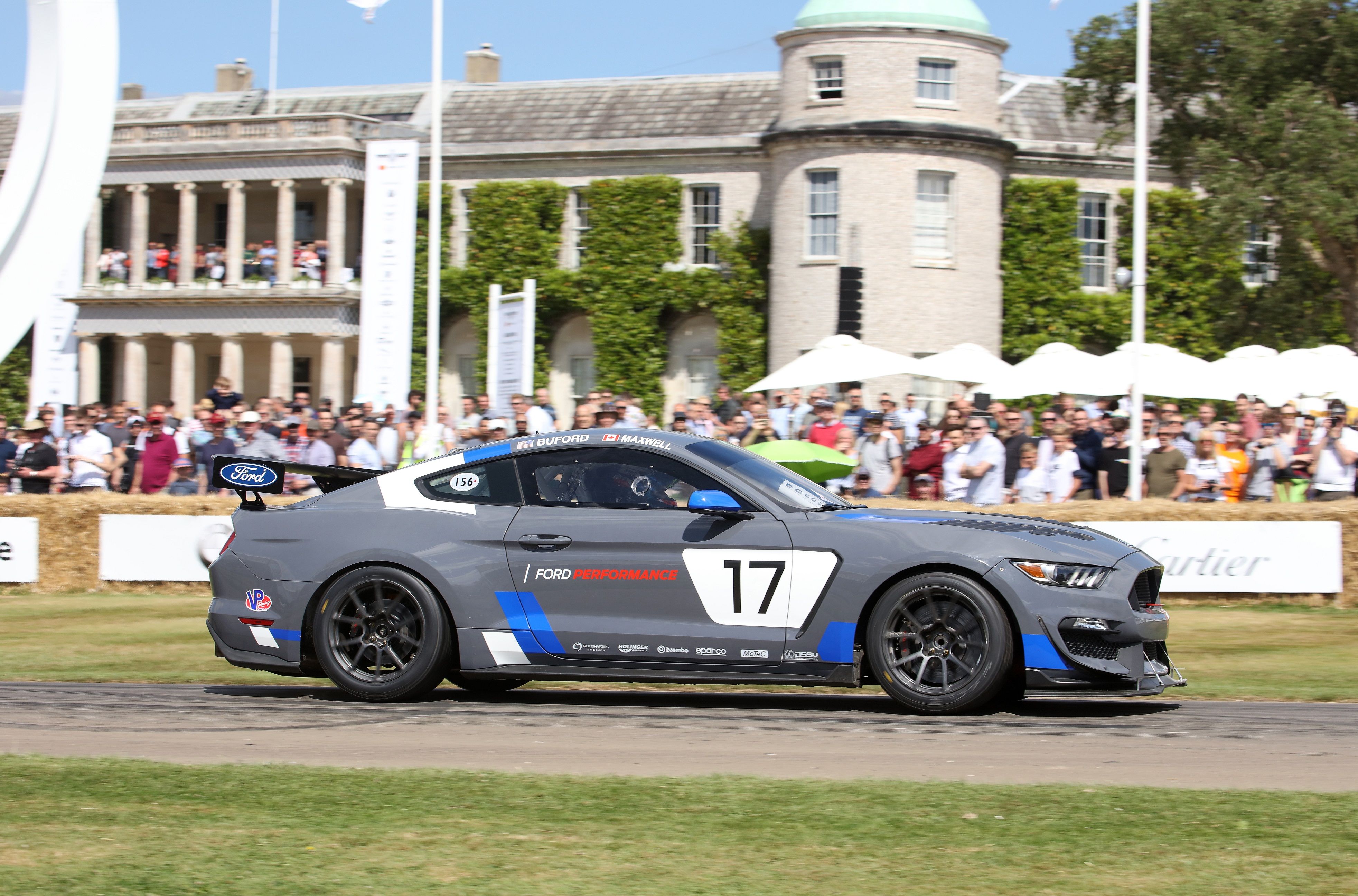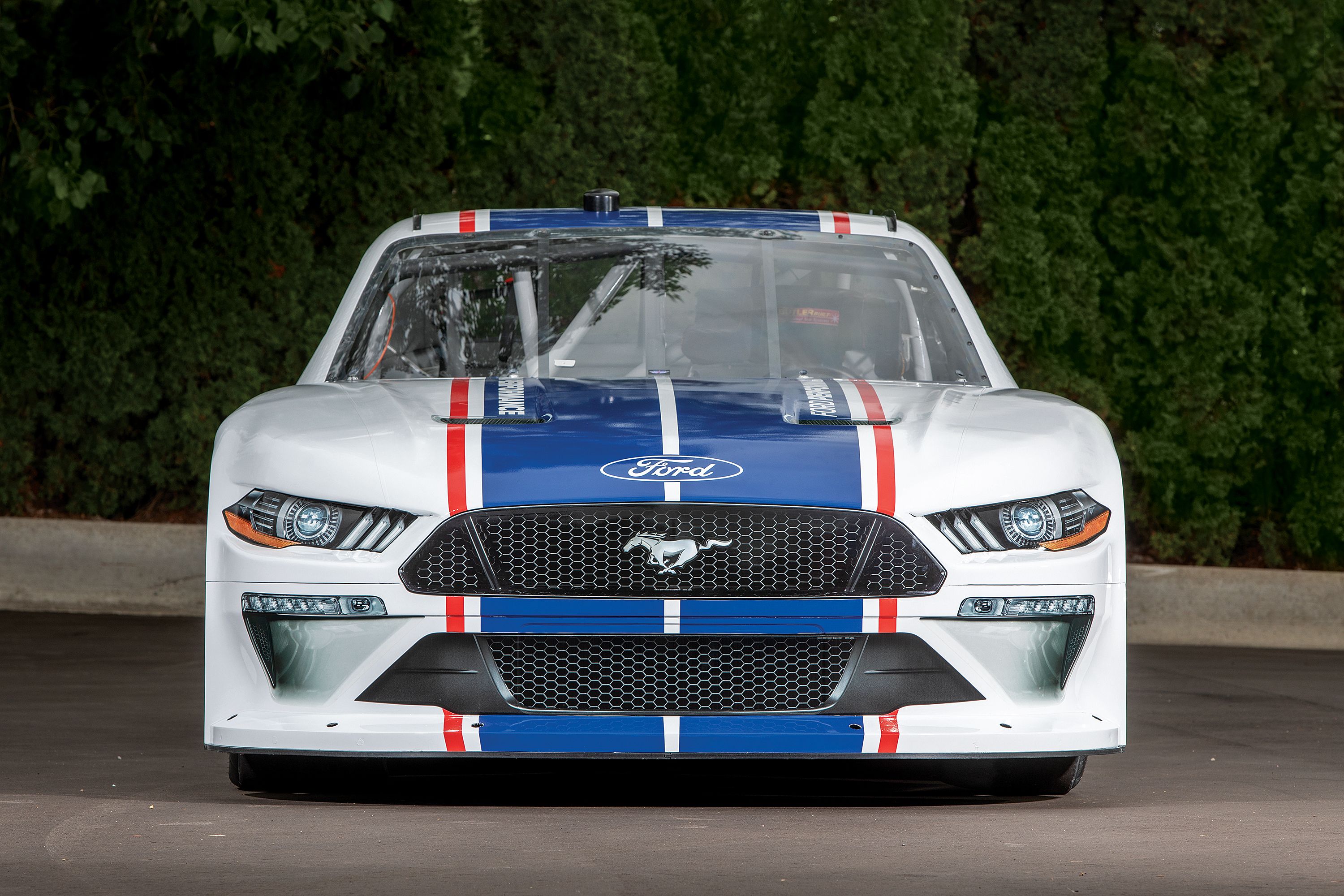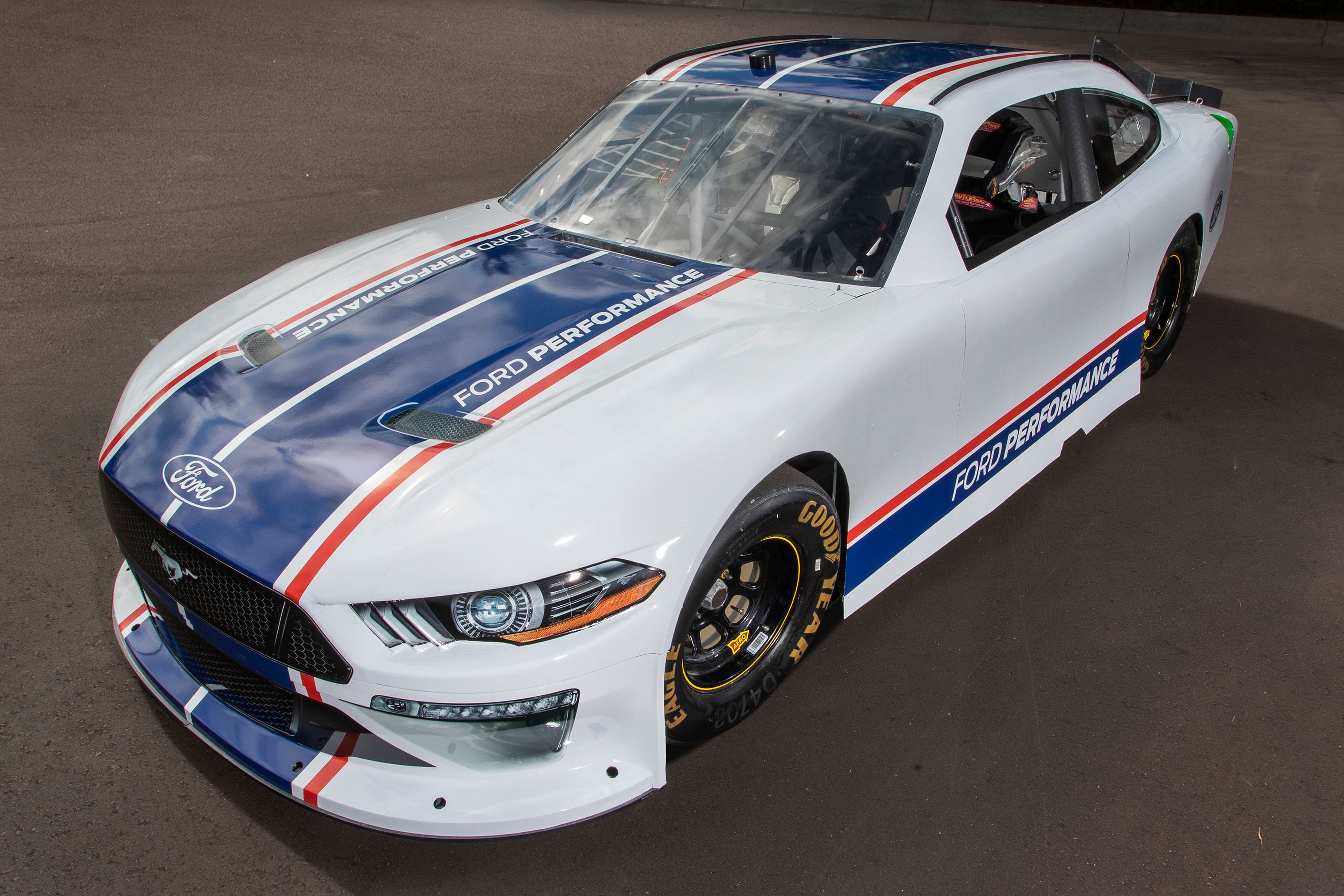Ford quit the IMSA Weathertech Sportscar Championship and the FIA World Endurance Championship at the end of 2019 when its successful GT race car built to the GTE regulations was parked. Now, as GTE is nearing the end of its lifespan, at least in North America, Ford is looking at fielding a Mustang-based GT3 car in the future although the option to build an LMDh prototype that could fight for outright wins at Le Mans, Daytona, and Sebring isn't completely off the table either.
Change of the guards prompts ford to look at gt racing again
The IMSA and Le Mans-winning Ford GT GTE built by Multimatic Motorsport allowed the Blue Oval to fight with the likes of BMW, Ferrari, Porsche, and Corvette on equal terms over the course of four seasons and Ford didn't replace it with anything when the GTs were parked two years ago. The rumor mill filled up with talk of a possible return to the prototype ranks but Ford Performance boss Mark Rushbrook suggests, in a chat with RACER Magazine, that a return to GT racing is the more likely alternative.
Beyond this current model based on the Shelby GT350, race-prepped Mustangs have been a thing virtually every since the Mustang was born all the way back in 1964 and Rushbrook not only knows that but also wants to carry on with that tradition. After all, the legendary pony car is currently the only car that Ford sells Stateside, a sleek and charismatic alternative to the scores of pickup trucks and crossover-SUVs.
"As a company, we’re committed to motorsports," he told RACER Magazine, and "at a high level, that certainly is not changing at all. We’re just retooling our programs to align, as we go forward, and a lot of that is waiting to see what really happens in the sport." Ford has also deployed Mustang-looking race cars in both NASCAR and Australia's V8 Supercars series that's soon due for a makeover which will result in the rebirth of the classic Camaro v. Mustang battles of yesteryear.
Ford has been part of most of the round-table meetings that have taken place over the last couple of years or so in the buildup to the announcement of the LMDh regulations, Rushbrook being an early proponent of hybridization within what will be, effectively, DPi 2.0. Now that a spec hybrid system (of the KERS variety) is part of the game plan and Porsche, Audi, and, most recently, Acura are onboard, Ford isn't ruling out an entry in that class sometime later this decade although this doesn't seem to be Ford's top interest.
"What we wanted the prototype class to become is really what LMDh has become," Rushbrook said, "we think that’s fantastic for the sport." However, with IMSA moving away from the ailing GTE class, plagued for years by its prototype-rivaling operating costs, Ford looks more and more seriously at the potential of a GT3 race car. "How does that make sense and what’s the right GT program to have moving forward as well? We are very interested in racing our Mustang platform around the world," the Ford Performance boss underlined. "We introduced the Mustang GT4 and with what we have seen with the growth of customer racing in total - not just at the GT4 level, but at the GT3 level - that is definitely of interest since is now a global sports car."
Up until now, BMW has been the only manufacturer that decided to build a GT3 car from the ground up to the new ruleset which will be introduced in 2022. The car in question, based on the M4 Coupe, is already undergoing very serious testing in the sim world (you too can drive it in iRacing and thus help BMW Motorsport in its quest to make the M4 GT3 better). The likes of Audi, Ferrari, and Porsche may, instead, opt to create new Evo packages that could be retrofitted to existing cars to bring them in line with the new requirements.
Could Ford be, then, the second automaker to build a 2022-spec GT3 racer? Rushbrook doesn't say it will unequivocally happen but he does say that GT3 is "a very logical place for the Mustang to race and a very logical place for us to look," especially in IMSA which has become even more attractive with the announcement of a 'GTD Pro' class being introduced for 2022.
The new pro class is the playground for both factory teams and privateers looking for a place to field cars driven by a roster of professional race drivers. Currently, under the GTD rules, the driving lineups must consist of amateur or semi-pro drivers (meaning Bronze or Silver-rated as per the FIA's ranking system) with the pros only lending a hand. GTD Pro is, effectively, a translation of the SRO's Pro class that it has successfully integrated into all of its national series including the Intercontinental GT Challenge.
BMW, for one, will most likely be in with its Rahal-Letterman Lanigan Racing operation scaling back for this year, the big M8 GTEs only contesting the four long-distance events. Expect two RLL M4 GT3s to prop up in GTD Pro next year and they should be met by equally stout entries from Lamborghini, Porsche, and Ferrari, the latter two being involved in GTLM at the moment while Lamborghini's factory-backed Grasser team could well be the one to carry the flag for the Sant'Agata Bolognese factory. This year, GRT will continue to field Huracan GT3 Evos in all of the races.
Corvette's trajectory in the future is a bit of a tougher riddle to solve but General Motors’ new Sports Car Racing Program Manager, Laura Wontrop Klauser, that has previously spearheaded Cadillac's sportscar program, says that GM is being proactive in light of all of the changes although she's tight-lipped when it comes to confirmations, for the time being at least. We've previously suggested that the change of guards over at Corvette Racing could tip to a shift towards LMDh and we think now's the best time for a new Corvette-badged prototype to be born but it could well be that the Corvette C8.R gets slotted down to GT3 while Cadillac continues to carry the torch in the upper echelons and fight for overall wins.
GM's only factory-built GT3 car remains the ATS-V.R GT3, a Pratt & Miller creation made with the sole purpose to win in what was then the Pirelli World Challenge (now the GT World Challenge America). Only a handful of chassis were ever made and that was heavily frowned upon by the SRO that was in a partnership with PWC even back then. Ratel and his people want every manufacturer to sell at least 20 units within the first few years after the introduction of a car and full factory involvement also doesn't float their boat. A GT3-spec C8.R could be made out of the current GTE car but that's not easy. For is in a similar position with the past GT3 creations sporting the Blue Oval not actually a product of Dearborn. We're taking a look at those weird and somewhat forgotten offshoots below.
Ford boasts with a colorful history in sportscar racing
Ford made a name for itself in international motor racing on two fronts in the '60s and '70s: on the one hand, then-President and CEO Henry Ford II spent billions to build a car that would beat Ferrari at Le Mans following the well-known attempt by Ford to purchase Ferrari outright and control its racing department's spending. After ticking that box off thanks to what can only be described as a gargantuan effort that yielded two brilliant cars, the GT Mk. II and the GT Mk. IV, Ford went after Ferrari in F1 where, by the early '70s, just about everyone had a Ford-Cosworth engine.
In more recent times, Ford spent its dough trying to recapture the aura it had when its twin-striped machines were winning Le Mans. Efforts mainly bankrolled by Ford of Europe in the early days of Group C were embarrassing and even the ultra-fast Probe-badged IMSA GTP prototype that came soon after wasn't ready to make much of a splash.
Success only came when Ford took a step back and only involved itself as an engine provider, first for Bill and Bob Riley's Riley & Scott Mk. III-A WSC prototype that debuted in 1995 and then for a litany of Lola models. Ford-engined Rileys won the 24 Hours of Daytona outright in both '97 and '99 with Dyson Racing grabbing a bunch of titles around that time in both IMSA and the USRRC. While the latter morphed into the Grand-Am Road Racing Championship and open-top prototypes became the first iteration of the Daytona Prototypes for 2003, Ford engines kept powering winning cars.
While Chip Ganassi's Riley chassis have also used Toyota (under the Lexus name) and BMW powerplants during CGR's involvement in Grand-Am, in the last few years that those cars ran they did so powered by Ford's muscle. Indeed, it was that connection that eventually landed Ganassi the Ford GT deal for the 2016 season - when the car won its class at Le Mans. The tiny Ford Ecoboost engine last won Daytona in 2015.
The Ford Mustang has worn GT3 clothes before
It was back in 2007, the second year of the GT3 formula, that the world first laid eyes on a very mean-looking Mustang drenched in blue that tried its best to belie its size helped by some 550 ponies and 420 pound-feet of torque coming from its 5.0-liter V-8. The winged and fat-arched beast, a product of Multimatic later improved by Matech Concepts, was based on the existing Mustang FR500C which was a Ford Performance-approved product.
Multimatic built the FR500C for Grand-Am's Cup class, which then became GS (the precursor to today's GS class). The FR500C was also entered in the FIA GT4 series but Multimatic saw the potential to do more. Ford instructed Multimatic to build a more extreme FR500C for a support series that would trek around the States following the Champ Car series. After Ford bailed out of Champ Car, the project was canceled and Multimatic was stuck with this thing that looked approximately like 2005's Mustang GTR Concept.
The decision was made to have this car, nicknamed the 'Man Racer' (because the standard FR500C was nicknamed 'Boy Racer'), modified to FIA's and the SRO's whims - they complained about the American-style rollbar, for instance - and enter it in GT3.
Matech stepped into the picture in 2008. Having built the GT3-spec Ford GT already, the Swiss company took over the Mustang program as well, the deal being that Multimatic would offer some form of assistance and allow its drivers to compete in Europe. A variety of drivers hustled with the 'Stang that year, including Multimatic's own Scott Maxwell and fellow Canadian John Graham, but despite the best efforts of everyone involved a sixth place in race 1 at Monza (for Maxwell and De Doncker) was the best that the Mustang could muster.
For reasons that defy logic, the thoroughly uncompetitive car wasn't parked at the end of the season, Matech finding a customer for it in the form of Raphael van der Straten who ran VDS Adventures (a continuation of the original VDS team of his father that ran successfully in Can-Am in the '70s). The red VDS Mustang competed in the Belgian GT Championship in 2009 with racer/journalist Stephane Lemeret usually partnering van der Straten.
"It’s so entirely different from other GT3s that I discovered some new bends at Zolder," exclaimed Lemeret who felt that taming the biggest GT3 car of them all was no easy task. Van der Straten chimed in with similar thoughts, saying the car is overweight and has a propensity for eating up brakes, its live rear axle also a remnant of the past. In spite of all this, VDS Racing Adventures only retired the car at the end of 2012!
By then, another Mustang GT3 had come and gone and, lo and behold, it was the brainchild of Raphael's brother, Marc van der Straten, the boss of the now-defunct Marc VDS racing team. Based on the underpinnings of the facelifted fourth-gen Mustang, the model was unveiled in 2010. While Marc van der Straten paid for the whole thing, it was, once again, Multimatic that carried out the building process.
Powered by a 5.3-liter 560 horsepower V-8 engine, the new Mustang VDS remained heavy at 2,976 pounds but at least benefitted from the use of a transaxle. The car competed only four times in its debut season, splitting its runs between the European FIA GT3 Championship and the FFSA-governed French GT Championship. We wrote about this car in April of 2010 when we mentioned that Marc VDS was also racing a Ford GT GT3. Choosing between the two proved effortless.
That's because the Mustang VDS GT3 was a lackluster car. It flunked on its debut at Silverstone, the car remaining stuck in the garage after it was deemed illegal by the stewards due to a homologation issue. The season progressed in a similar fashion. A pair of back row starts at Brno in the Czech Republic were followed by a fruitless trip to Spain's Jarama Circuit where the car didn't even compete. Two examples then showed up at Albi, in France, for a French GT meeting and it was there that the car recorded its best result: a sixth place in the hands of Maxime Martin Gael Lesoudier.
Mercifully, the car was parked after October's Magny-Cours round since Marc VDS prepared to take ownership of a BMW Z4 GT3. But the Mustang refused to die. Come the 2011 edition of the 24 Hours of Spa, the first to be part of the Blancpain Endurance Series (now the GT World Challenge Europe Endurance Cup), the Mustang showed up again. Both it and its older sibling owned by Raphael van der Straten took part, in fact.
Once more, logic seemed to avoid the Belgians as Marc VDS took on the arduous task of racing three types of cars in one race: the Mustang, the Ford GT GT3, and the Z4 GT3. Nobody asked that of Marc but he did it anyway. Moreover, he had Maxime Martin's own dad, four-time Spa 24-hour winner Jean-Michel Martin to drive the heinous thing together with Eric Bachelart and Marc Duez. Somehow, the veteran trio reached the checkered flag, albeit 77 laps behind the team's Ford GT that was classified in eighth place overall.
In a showcase of cynicism, the Mustang emerged once more from the doldrums three years later when Jurgen Alzen decided, against all odds and probably all recommendations, to enter one of the VDS chassis in the German VLN championship. Having been successful with the Ford GT, Alzen presumably thought he could make the Mustang work too but, to the surprise of absolutely none, he couldn't. Nowadays, he's still racing the Ford GT in Germany from time to time. Some say fever dreams of the silver 'Stang still creep up on him when he's in a deep slumber. Here's hoping the next Mustang GT3 - if there ever will be one - is a thoroughbred, not an obese donkey with a sprained ankle.

